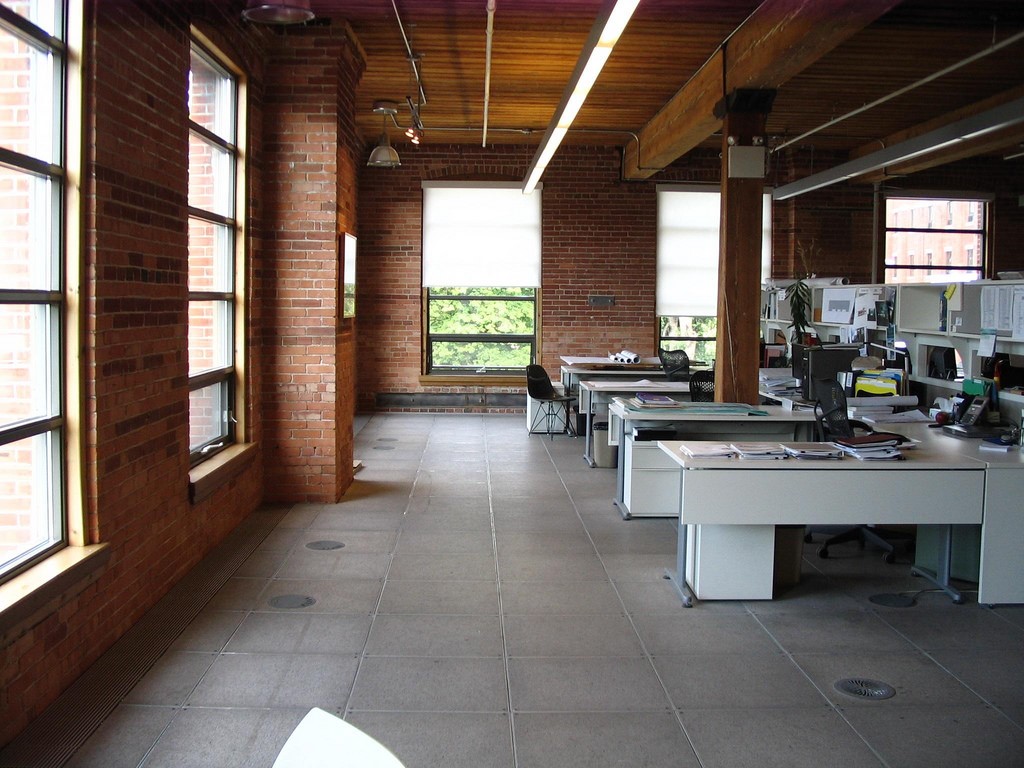Image Credit: Flickr
Shared workspaces, also known as coworking spaces, have been increasing in popularity over the last few years. Coworking spaces are unique alternatives to working in a traditional office setting, and more and more people have started taking advantage of coworking spaces near them. There are pros and cons to both working at a traditional office and a coworking space, and it can be difficult to know which one is best for you. Here are a few helpful insights on the pros and cons of working in coworking spaces and traditional offices to help you make a decision that benefits you and your work.
Coworking Spaces
Pros: Coworking spaces are great options for remote and freelance workers, who often don’t get the chance to work outside of their homes. For these kinds of workers, coworking is a great opportunity to network and work among other people, which is something they otherwise would not get to experience. Working exclusively from home without any social interaction throughout the day can get lonely for many remote workers, so having the option to work in a shared environment is appealing to many people. In addition to this, coworking spaces are often more relaxing than working from home. A typical shared office space in Brisbane, for example, might feature high ceilings, comfortable lounge areas, and plenty of natural light. Getting a change of scenery is something many remote workers long for, and coworking spaces provide that. Finally, coworking spaces encourage open communication and networking, which is something even working from your laptop in your local coffee shop can’t always guarantee. If you’re someone who craves social interaction during the workday but doesn’t often get it, a coworking space can be a good choice for you.
Cons: While coworking spaces are generally positive environments for remote workers, there are a few cons. One thing that you may not like about working at a coworking space is that your coworkers are constantly changing. New people are always joining, which can feel strange and unfamiliar if you’re someone who takes a while to warm up to new people. Another thing can be be seen as a con is the fact that coworking spaces invite social interaction, which can be distracting at times. Being able to shut out all of the noise and focus on your work is one of the most important parts of working at a coworking space, so make sure to keep that in mind before joining one.
Traditional Offices
Pros: Traditional offices are still the most common types of settings for workers, as coworking spaces are a relatively newer idea. Traditional offices offer structure and discipline, while people working in coworking spaces are responsible for creating their own structured schedule. Many people enjoy having the ability to work directly with their supervisor in a traditional office setting, instead of having to email them while working remotely. Working in a traditional office often has employee perks, such as mental health days and free lunches with ways to motivate employees. Additionally, working in a traditional office guarantees that you will be seeing the same people each day, helping to form friendships and workplace bonds.
Cons: Many people who work in traditional offices often feel smothered by constantly working in the same environment, and many employees tend to feel burned out by the end of the week. This can be caused by many things, including working in the same place every day and not getting much of a change of scenery. In these cases, working remotely or in a coworking space one or two days per week can be extremely beneficial, as long as your employer allows it.
There are pros and cons of both traditional offices and coworking spaces- the key is finding which one works best for you!



